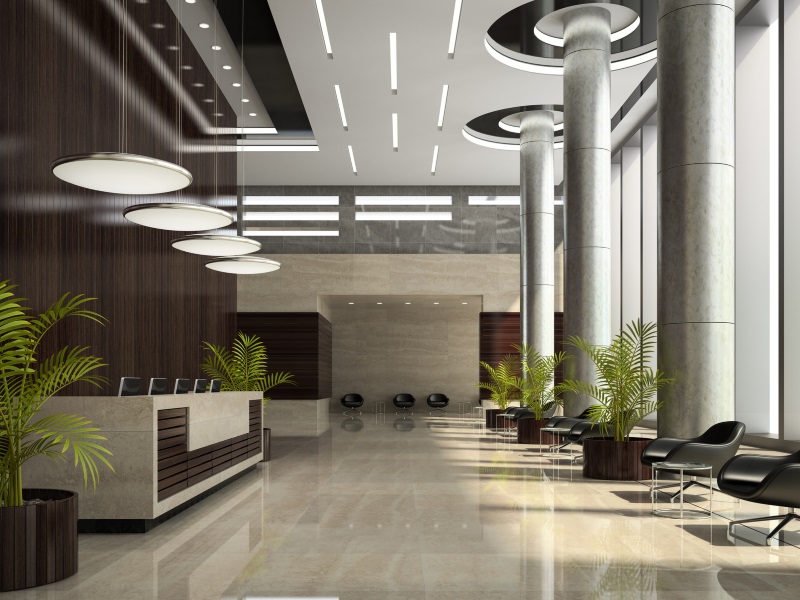Commercial architecture plays an important role in a business’s branding strategy. Whether you’re creating a new space or renovating an older one, it pays to be aware of trends and how they can affect public perception of your business.
We’re now far enough into 2019 to see how some trends are evolving and how you might consider incorporating them into your commercial building project.
Sustainability
Sustainability continues to be one of the most significant trends in commercial architecture. With customers and clients ever more aware of environmental issues, they expect to see the businesses they patronize pay attention to the impact their operations have on our world.
Moreover, business owners are recognizing that there are long-term economic benefits to creating a more sustainable space.
Sustainable strategies for commercial architecture include:
- Using green building materials
- Deploying waste reduction strategies for deconstruction/demolition
- Maximizing energy efficiency
- Installing a solar energy system
For maximum impact, you can consider getting one of several green building certifications for your project.
Healthy Buildings
A related concept in commercial architecture is creating the healthy building. Successful businesses invest in the wellness of both workers and customers.
Indoor Air Quality
Indoor air quality is probably the most important element affecting a building’s health. Reducing dust, mold or toxic building materials or products that can make a building uncomfortable or even unhealthy is a key strategy. Minimizing the use of materials and products that can release volatile organic compounds, for example, can help ensure your building’s air stays clean and breathable.
Make sure to talk to your architect about the best way to promote good air exchange in your building via proper ventilation, either natural or by ducting.
Natural Light
Thankfully, the days of offices and industrial spaces with harsh fluorescent lighting are going the way of rotary telephones and flocked wallpaper. More and more businesses are incorporating natural lighting in their work spaces, which, some research suggests, can have a positive impact on health and well-being.
Fortunately, it’s easier than ever to maximize the natural light in a building, either via energy-efficient windows or options like skylights, solar tubes or retractable roofing.
Indoor Vegetation
Incorporating plants into your commercial space is another way to boost your building’s wellness quotient. A little greenery can help improve mood and possibly reduce indoor pollution, and fortunately, it’s easy to add to your design plan.
It can be as simple as making space for plants, or you can ask your architect to design more permanent features to accommodate greenery, such as moss or living walls.
Flexible Collaborative Spaces
More than ever, business owners recognize that effective collaboration is essential to success, but simply removing walls for an open floor plan may not be the answer.
Instead, they’re turning to flexible spaces that couple private offices (sometimes with glass walls) and team spaces that foster creativity with elements like comfortable couches, coffee bars, or even gaming areas. When planning these spaces, be sure you and your architect talk about technology needs – will you need monitors, special electrical outlets or high-speed internet connections?
Co-Working Spaces
Beyond intra-company collaboration, some businesses are leveraging the benefits of creating co-working spaces.
There’s far more to say about this topic than I can cover here, but the idea is to build a work environment that can be shared by different professionals.
One benefit of co-working space is the opportunity to share expenses with another entrepreneur. The cost of a better location or upgraded design is easier to bear when it’s split between businesses. Shared utilities can also cut down on expenses.
A co-working space can also allow for growth, if you are able to purchase a building larger than you need at the outset and rent out the additional space.
Repurposed Buildings
One of the most exciting trends (for me as an architect, anyway) is business owners finding new ways to use old buildings. It combines the environmental recycling ethos with architectural preservation while giving business owners and architects the chance to collaborate on a project that showcases creativity.
Former warehouses are an obvious choice for repurposing because of their size and “blank space” feel, but an imaginative architect can repurpose other buildings in surprising ways that can create a unique space for your business.
One of my favorite examples is Calistoga’s Tank Garage Winery, which, as the name suggests, turned an old gas station into an innovative showroom for the winemakers’ products and created a fun community space that pays homage to the location’s history.
In Detroit, an old firehouse was transformed into a boutique hotel that preserved the original building’s neoclassical design while creating a distinctly modern hospitality space.
The Green Building in Louisville, Kentucky, transformed an old dry goods store into an model of sustainable architecture, a multiuse commercial building that incorporate offices, events spaces and galleries.
If you’re planning to build, buy or renovate a building, talk to your architect about how can take advantage of these commercial architecture trends to create a space that reflects your business’s brand.


